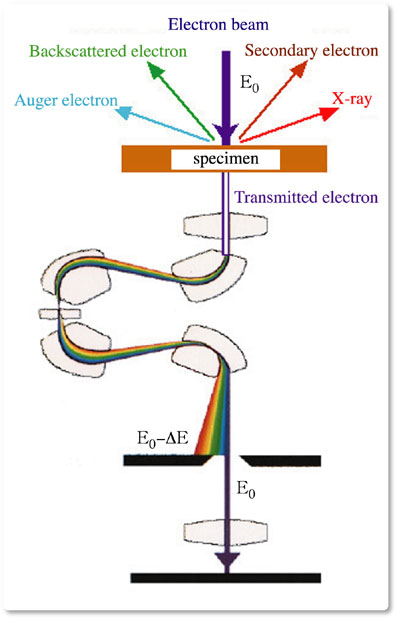| Å@ |
Prof. Chiken Kinoshita
Department of Applied Quantum Physics and Nuclear Engineering,
Faculty of Engineering |
 Quantitative
and qualitative characterizations of materials are strongly required
to obtain detailed structural, chemical and elemental
information at the highest level
of spatial resolution. Structural information can be derived
from achieving the electron diffraction pattern, which reflects
the 3-D atomic arrays of the materials or achieving 2-D images
with atomic resolution. However, chemical information, such as
the location of impurity atoms or the positions of atoms, is
more difficult to extract from plane images and often electron
microscopist has to resort to fine-probe
techniques (e.g., electron energy-loss
spectroscopy or energy dispersive X-ray spectroscopy) to identify
and locate chemical species. Quantitative
and qualitative characterizations of materials are strongly required
to obtain detailed structural, chemical and elemental
information at the highest level
of spatial resolution. Structural information can be derived
from achieving the electron diffraction pattern, which reflects
the 3-D atomic arrays of the materials or achieving 2-D images
with atomic resolution. However, chemical information, such as
the location of impurity atoms or the positions of atoms, is
more difficult to extract from plane images and often electron
microscopist has to resort to fine-probe
techniques (e.g., electron energy-loss
spectroscopy or energy dispersive X-ray spectroscopy) to identify
and locate chemical species.
When a high-energy electron beam traverses
a sample, many interactions occur between the beam electrons
and the electrons in the material; for imaging purposes one is
usually interested in the elastic part of the scattered electrons, and necessary
to remove the inelastically scattered electrons from the images.
Inelastic scattering electrons, i.e., the incident electron
looses a fraction of its energy, result in blurry images and
a decreased signal-to-noise ratio. To overcome such dilemma,
numbers of researchers have worked on the development of energy-filters since the early stages of transmission electron
microscope. In energy-filtered TEM, the electron microscopist
selects electrons that have lost a certain amount of energy in
inelastic scattering processes, and creates an image with those
electrons.
Since the energy-loss spectrum of a
material contains a signature of all the chemical species present,
one can actually "tune in" to a certain element and
obtain the two-dimensional distribution of elements in the specimen
and select optimum image contrast. Energy shifts can be observed
which are related to the chemical environment of the atoms, and
hence bonding information may be derived from the fine structure
of the energy-loss spectrum.

|
